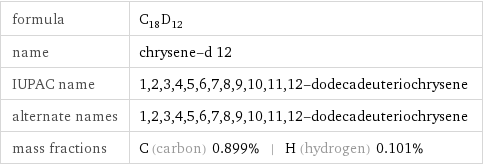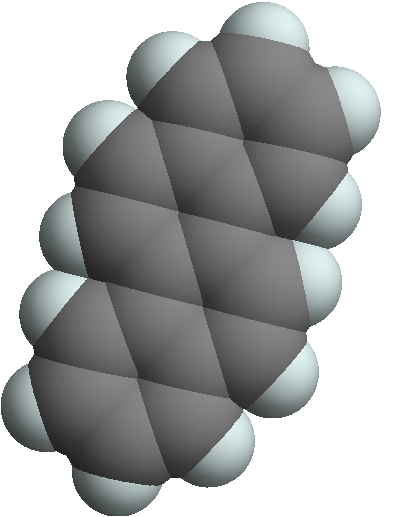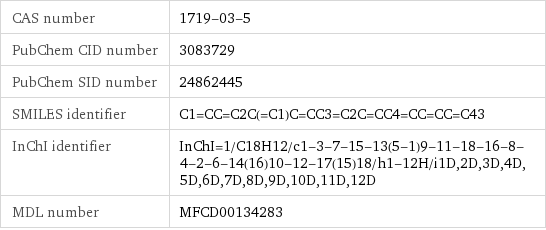Input interpretation

chrysene-d 12
Chemical names and formulas

formula | C_18D_12 name | chrysene-d 12 IUPAC name | 1, 2, 3, 4, 5, 6, 7, 8, 9, 10, 11, 12-dodecadeuteriochrysene alternate names | 1, 2, 3, 4, 5, 6, 7, 8, 9, 10, 11, 12-dodecadeuteriochrysene mass fractions | C (carbon) 0.899% | H (hydrogen) 0.101%
Lewis structure

Draw the Lewis structure of chrysene-d 12. Start by drawing the overall structure of the molecule, ignoring potential double and triple bonds: Count the total valence electrons of the carbon (n_C, val = 4) and hydrogen (n_H, val = 1) atoms: 18 n_C, val + 12 n_H, val = 84 Calculate the number of electrons needed to completely fill the valence shells for carbon (n_C, full = 8) and hydrogen (n_H, full = 2): 18 n_C, full + 12 n_H, full = 168 Subtracting these two numbers shows that 168 - 84 = 84 bonding electrons are needed. Each bond has two electrons, so in addition to the 33 bonds already present in the diagram add 9 bonds. To minimize formal charge carbon wants 4 bonds. Identify the atoms that want additional bonds and the number of electrons remaining on each atom: Fill in the 9 bonds by pairing electrons between adjacent highlighted atoms. Note that the six atom rings are aromatic, so that the single and double bonds may be rearranged: Answer: | |
3D structure

3D structure
Basic properties

molar mass | 240.37 g/mol phase | solid (at STP) melting point | 253 °C boiling point | 448 °C
Units

Non-standard atom properties

H-2 | 12
Chemical identifiers

CAS number | 1719-03-5 PubChem CID number | 3083729 PubChem SID number | 24862445 SMILES identifier | C1=CC=C2C(=C1)C=CC3=C2C=CC4=CC=CC=C43 InChI identifier | InChI=1/C18H12/c1-3-7-15-13(5-1)9-11-18-16-8-4-2-6-14(16)10-12-17(15)18/h1-12H/i1D, 2D, 3D, 4D, 5D, 6D, 7D, 8D, 9D, 10D, 11D, 12D MDL number | MFCD00134283